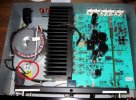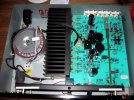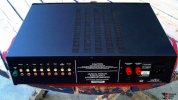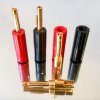It means it can be one of 100, 115 or 230 VAC, preset at the factory.
So, moving to India you will need to make sure it is set to 230. If it's easy it makes sense to get it done from the manufacturer/dealer, since getting support in India may not be as easy.
When the term 'factory preset' is used, it can mean 2 possibilities:
1) specific types of transformers with primaries suitable for the geography/market - for example 100v primaries for the Japanese market, 110v for the American market, etc. These manufacturers use different transformers depending on the primary voltage requirements
2) a single transformer with multiple primary voltage taps, used universally in their amps for sale across all geographies/markets, however the primary circuit is hard-wired based on where the amplifier is sold
If the transformer of your amp falls in the first category, the options available would be to (1) use a step-down transformer in India or (2) obtain a new transformer suitable for your amp from the manufacturer (or suitable alternatives) which is meant for amplifiers sold in the European market
If the transformer of your amp falls in the second category, you can rewire the primary circuit using the 220/230v primary tap, for use in India.
In the picture shared by FM lowpoweraudio, it seems like the transformer has 2 taps and one neutral (the yellow sticker is not clear in the photograph). You can perhaps take a closer look in your amp. It may the second type which I have mentioned above in this post.
Caution: Never attempt to rewire a transformer's primary without referring to the service manual, the transformer specs and transformer wiring diagram, or without consulting a knowledgeable tech. Incorrect wiring (wrong voltage tap selection) can result in damage to the primary of the transformer.






